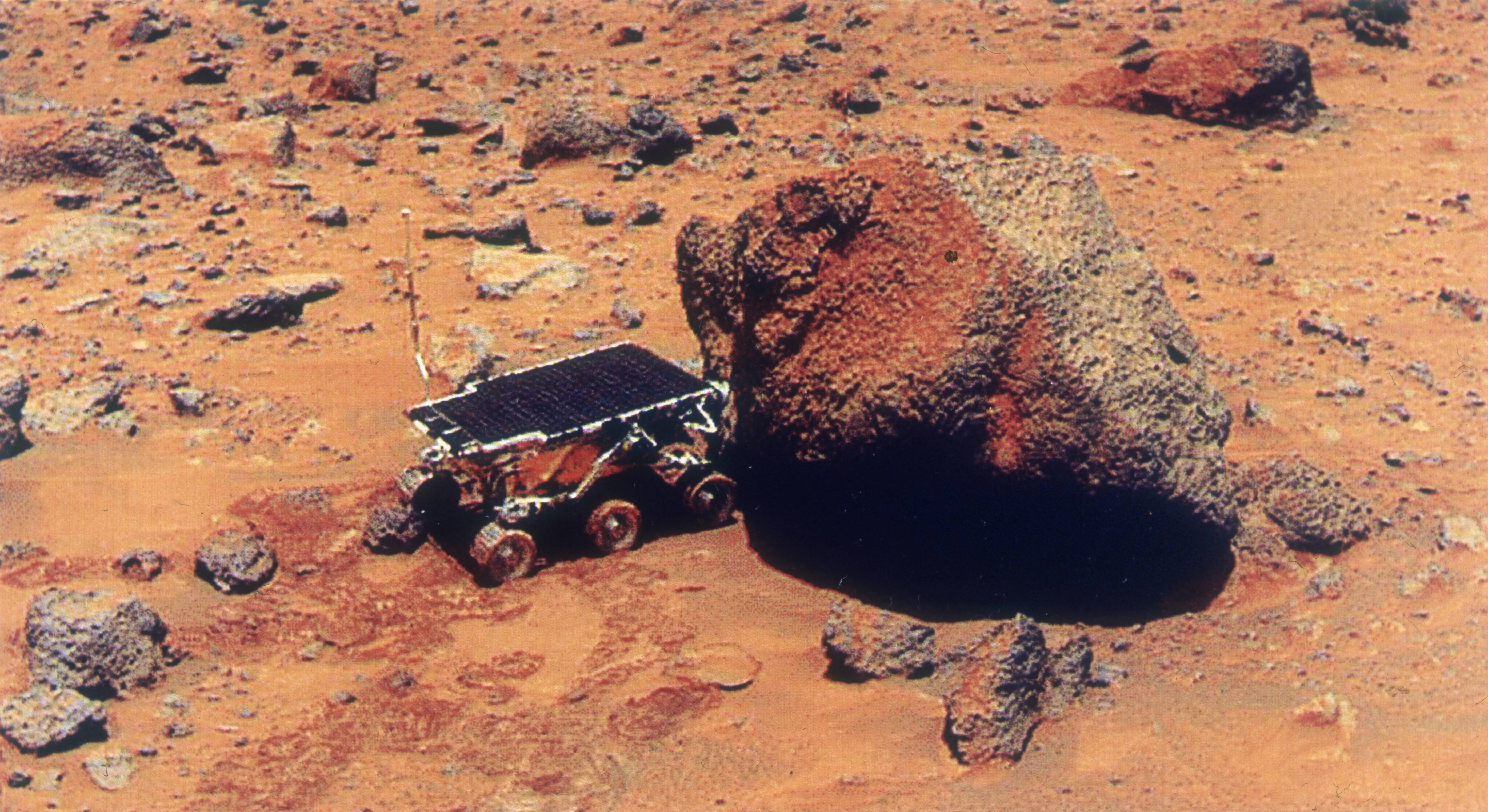NASA launches new Mars mission with twin satellites to study how the Red Planet lost its atmosphere
-
 The Sojourner Rover uses its Alpha Proton X-Ray Spectrometer (APXS) to analyse the Yogi Rock on the surface of Mars, during the Mars Pathfinder exploratory mission, July 1997. The rock was thought to be composed of basalt. (Photo by Space Frontiers/Hulton Archive/Getty Images)
The Sojourner Rover uses its Alpha Proton X-Ray Spectrometer (APXS) to analyse the Yogi Rock on the surface of Mars, during the Mars Pathfinder exploratory mission, July 1997. The rock was thought to be composed of basalt. (Photo by Space Frontiers/Hulton Archive/Getty Images)NASA has started a new mission to Mars to learn more about how the planet lost most of its atmosphere and became the dry world we see today. The mission uses two small twin satellites that will fly around Mars and collect data to help scientists understand what happened to its air over time.
A new way to study Mars
The two satellites are part of NASA’s ESCAPADE mission (Escape and Plasma Acceleration and Dynamics Explorers). They are small in size — about as big as a suitcase — and much cheaper to send into space than older missions. The satellites were built by Rocket Lab for NASA and will study how the Sun’s energy affects the thin atmosphere around Mars.
NASA scientists hope the mission will help answer questions about why Mars changed so much. Long ago, it may have had rivers, lakes, and even a thick atmosphere like Earth’s. Now, it is a cold and dusty planet with very little air left.
Why Mars lost its air
Scientists believe that billions of years ago, Mars had a magnetic field that protected it from solar winds — streams of charged particles that come from the Sun. But when that magnetic field disappeared, these solar winds began to slowly blow away Mars’ atmosphere into space.
The new satellites will measure how this process still happens today. They will study how gas and energy move around Mars and how particles escape into space. This data will help scientists understand how fast the atmosphere is still being lost and what causes it.
How the satellites will work
The twin satellites will travel around Mars in different orbits. One will fly closer to the surface, while the other will stay farther away. They will both measure magnetic fields, gas movement, and solar particles.
By comparing what each satellite observes, scientists can build a clearer picture of how the Sun’s energy interacts with Mars’ atmosphere. The mission will run for about a year, but it could continue longer if the satellites remain in good condition.
This is the first time NASA is using two small spacecrafts together to study Mars in this way. The approach saves time and money while providing detailed information from multiple angles.
What NASA hopes to find
NASA hopes this mission will fill in the gaps left by older projects like MAVEN, which has been studying Mars since 2014. While MAVEN gave scientists important clues about how the Sun affects Mars, these twin satellites can collect data from different points at the same time, making the results even more useful.
The findings from this mission will also help prepare for future human missions to Mars. Knowing how solar radiation behaves near the planet can help protect astronauts and improve spacecraft systems.
This mission shows NASA’s new focus on smaller, faster, and more affordable space projects. Even though the satellites are small, they can collect powerful data that helps scientists learn more about other planets.
By studying how Mars lost its atmosphere, researchers also hope to understand how other planets — including Earth — change over time.
The two satellites will keep sending back data as they orbit the Red Planet, giving scientists new insights into how Mars became the world we see today.
TOPICS: NASA
- NASA’s Webb telescope detects the earliest known supernova from 730 million years after the Big Bang
- NASA completes assembly of the Nancy Grace Roman Space Telescope
- Supermassive black hole unleashes ultra-fast winds moving at 20% the speed of light
- NASA missions identify unusual Gamma Ray burst with record duration